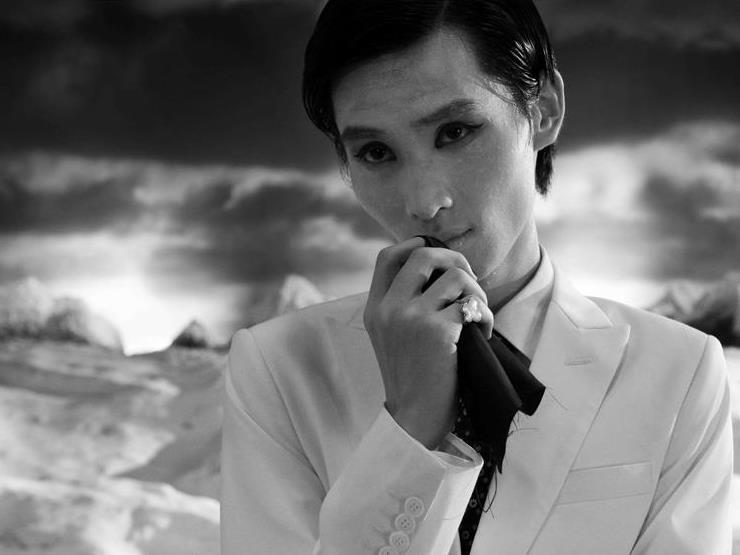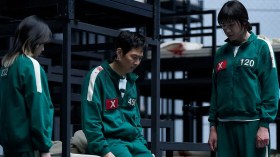Image: ACMI
Filmscapes features four film and video installations by filmmaker Yang Fudong: The Fifth Night (2010), The Nightman Cometh (2011), East of Que Village (2007) and his newly commissioned work The Coloured Sky: New Women II (2014).
Fudong originally trained to be a painter at the China Academy of Fine Art in Hangzhou, but began working with film during the 90’s. His film and digital video installations explore the anxieties and aspirations of a changing Chinese culture through powerful, dreamlike sequences.
The Fifth Night is a 7 screen black and white sequence that was captured in exactly one take. Men dressed in suits and simple ripped clothing wander aimlessly along the snowy streets of 1930’s Shanghai. Their almost fearful expressions coupled with the intense orchestral soundtrack leave you with the sense that something is wrong here. Small shrines and rickshaws, traditional icons of Chinese culture, are damaged and seem out of place. Some of the characters even carry suitcases as they wander; displaced and with no where to go. The truth of this narrative remains elusive, but the viewer is left with the sense of dislocation and uncertainty of China’s cultural identity during this era.
Fudong’s latest work The Coloured Sky: New Women II breaks away from his signature 35mm black and white film for high definition video. The multi-screen installation is drenched in colour, reminiscent of 1950’s technicolour films or vintage postcards. The young female subjects also play into this nostalgic theme, dressed in retro bathing suits and frolicking at the beach. What’s most striking is how they are portrayed; sensual, nymph-like but at times timid. The video is interjected with shots of rotting, insect infested fruit. This just juxtaposition seems to suggest these youth women represent something sinful or are a forbidden fruit. The piece is an interesting exploration of the construction of female sexuality, particularly with China’s history of concubines.
The most confronting work in the exhibition is undoubtedly East of Que Village. Filmed in the rural Chinese province of Herbei, the sequence illustrates the impact of industrialisation, urbanisation and the suffering of those who are neglected by this system. A pack of wild dogs fight to the death to survive amongst a group of struggling villagers. The images of starving and injured dogs are confronting enough, but it’s the sense that even those of the lowest rung of the village pecking order are affected. Puppies are already afflicted, hobbling along in the search of food. The villagers tend to muddy and barren crops. The high pitched whine of the animals and the sound of crunching bones as they pick at a decaying carcass make this an extremely potent piece.
While all the pieces are unique visually, there seems to be an overriding theme of displacement. Whether it is displacement in society, sexual identity or culture, Fudong’s subjects navigate the labyrinth of their reality in search of some kind of truth. Everything from the settings, soundtrack and costuming work to involve the viewer in their journey as well as shedding light on their individual struggles.
Filmscapes is a wonderful sampling of Fudong’s work and an integral piece in the China Up Close Program.
Filmscapes
ACMI
December 2014 – March 2015
Visit acmi.net.au for more details
Actors:
Director:
Format:
Country:
Release:





